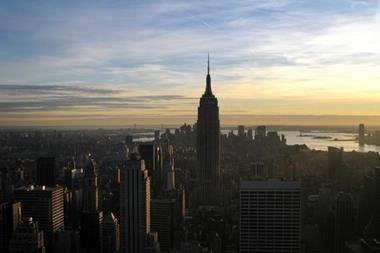Kidnappers and extortionists use violence as a means to their financial or political ends. They pose a threat to both employees and corporate reputations. Nathan Skinner talks through the problem
A bedraggled old Russian car pulled onto the quiet residential street in Grozny. The road was lined with shelled out apartment buildings, battered but still standing in defiance of the Russian carpet bombing. The strange stillness offered a haven of tranquillity compared with elsewhere in the ruined city. The rebel republic was in the grip of Russian military rule, checkpoints had sprung up across the city and guerrilla attacks were a favourite evening pastime for the local separatist militants.
Mike Penrose was riding in the car accompanied by two other European aid workers and their ethnic Russian driver. The warm July morning was apparently normal by Grozny’s standards. Minutes into the journey and the stillness was shattered. As the car rounded a corner a grey transit van screeched into the road and blocked its path. Six black-hooded militants leapt through the van’s doors and stormed the foreigners’ car. Shouting and brandishing automatic weapons the kidnappers bundled Penrose and another of the Europeans into the van. The aid workers had been kidnapped by professional hit-men and were due to be ransomed. First they would have to endure a month as the –captives of rebel fighters at the height of the brutal Chechen war.
Few things can be more terrifying than being kidnapped, held captive and left to dread an uncertain fate. And so kidnap and ransom has become a powerful tool for terrorists as a means of coercion. It is a common tactic for desperate groups in many deprived and conflict-ravaged parts of the world as a means of extorting money or political gain.
Employer’s responsibility
Organisations that send their people to dangerous parts of the world have a moral and legal responsibility to make sure they are aware of the risks and properly prepared for the consequences. New laws in Britain have heightened the focus on directors’ personal responsibility to ensure the health and safety of employees. If they do not practise their duty of care, employers are at serious risk of civil liability and a remote risk of criminal prosecution.
A formal risk assessment is essential and as much training as possible is a good idea, but choosing the right people to send into highly stressed environments is even more important. Proper preparation for a crisis is crucial as there are a myriad of ways criminals use to extort their aims.
Few will forget the tragic story of Kenneth Bigley. The 62-year-old engineer was taken hostage, along with two other Americans, while working in Baghdad. The kidnappers, a hard-line group opposed to the US led occupation of Iraq, threatened to behead all of their captives if their demands were not met. In an emotional TV appeal, for which the media was criticised, Bigley pleaded for his life, but the UK government held firm to its policy of non-negotiation with terrorists. Despite rescue efforts by the security services the kidnappers killed their hostages, but the government’s hard-line may discourage further kidnappings of British targets.
The official advice is never pay ransoms. But in a televised interview following the theft of the Saudi supertanker Sirius Star (see box), Lloyd’s of London chairman Lord Levene said sometimes there is ‘no alternative’. Asked by a Channel 4 News journalist if the owners of the Sirius Star would pay the £10m ransom demanded by the Somali pirates Levene said: ‘I would think that is highly likely yes.’ He added: ‘They have to make those decisions, but if I asked you the question do you think they should pay or have the crew murdered, what is the option? There isn't one.’
“Good CSR is your first line of defence
See also: Hijacked tanker likely to pay ransom
High risk areas
Undoubtedly conflict zones encourage extortion and kidnapping. It is seen as a legitimate weapon as much as any bullet or shell. While most of the kidnappings in Iraq and Afghanistan are politically motivated, certain parts of the world have professional mercenaries who make a business out of trading hostages.
Penrose survived his captivity and now works as a regional security director for International SOS. He remembers the experience vividly: ‘We asked the kidnappers why they had taken us? One of them wrote $250,000 on a blackboard and pointed at it then pointed at me, then he did the same with my friend.’
Mexico City has the highest rate of kidnappings in the world and most of them are financially motivated. Columbia is another well known hotspot. The FARC, the Revolutionary Armed Forces of Columbia, are usually responsible – although they have been weakened by recent military and political setbacks. It is estimated that out of the 8,000 kidnappings that take place each year, 6,000 are committed in Latin American countries.
When kidnappers are after ransom money their tactics are easier to understand and deal with. Sometimes the ransom can be negotiated down to an acceptable level. But if a company chooses to give in to ransom demands it is playing with fire. Most governments refuse assistance to entities that go down this route. Paying ransoms makes kidnapping profitable and can make an organisation into a target. Some estimates put the annual global takings of the kidnap industry at $500m.
A huge chunk of this foul trade probably takes place in the Gulf of Aden. The Gulf is the southern entrance to the Red Sea and around 16,000 ships a year traverse it on their way to the Suez Canal. The crucial shipping lane has become a shooting gallery where pirates regularly launch attacks against defenceless merchant ships. Most of the pirates come from ungovernable Somalia, which borders the Gulf on its northern coast. An international military coalition sends warships to patrol a narrow corridor, but that means most ships tend to bottleneck in these protected waters. As the ships cram together they are sometimes forced to steam slowly, which puts them at greater risk of attack. Since the beginning of the year more than 60 ships have been attacked by gangs operating out of Somalia and around 300 seafarers have been taken hostage.
The Standard Club, a shipping insurer, issued advice for captains to make their vessels a less attractive target for pirates. The bulletin recommends that ships maintain a distance of at least 300 miles from the Somali coast. Chris Spencer, director of loss prevention, also suggests they try to use evasive manoeuvring. ‘The small pirate ships can be vulnerable to heavy stern wash,’ he says.
“The official advice is never pay ransoms
Growth in extortion
Kidnap is not the only means of commercial extortion. The economic downturn could be driving an upswing in financially motivated crimes against companies. Sam Nicholls, head of Aon’s extortion consulting group and former boss of the police major crimes division, says: ‘Between 2003 and 2006, there was an average of 23 commercial extortion cases reported each year. In 2007, that figure hit 40. In the past year, there have been 67 recorded incidents.’ These figures may hide the true extent of the problem as commercial extortion is significantly under reported.
Commercial extortion ranges from protection rackets through to multi million sum demands against large organisations. The average cost is about £40,000 (€47,000). ‘Most claims are brought against the smaller end of the market but high profile organisations are also vulnerable,’ says Craig Preston, also in Aon’s crisis management unit.
It is not all about money. Ideological extremists who use violence as a means of achieving their aims can target the commercial sector. They may want a company to change policy. Extreme animal rights activists targeted Huntingdon Life Sciences, a Cambridgeshire-based research company, and the businesses associated with it. They launched a spree of arson attacks against Huntingdon’s service providers. ‘If you support or raise funds for any company connected with Huntingdon Life Sciences we will track you down, come for you and destroy your property with fire,’ was the warning on their website. Protesters under the same banner campaigned against AXA, whose only association with Huntingdon is that it invests in the New York Stock Exchange where the research company’s shares are traded. ‘For every share traded an animal dies at Huntingdon Life Sciences,’ was their claim.
It is not unheard of for angry employees to detain managers in an effort to force change. In September the local boss of an Italian manufacturer in India was killed by a mob of laid-off workers.
Insider attacks are also a threat. Individuals could be disillusioned with a company as a result of restructuring. The heavy reliance on IT and online trading means cyber criminals are in a strong position to perpetrate acts of extortion.
One of the best things companies can do to avoid attack is to not make themselves a target. ‘Good corporate social responsibility is your first line of defence,’ says Penrose. Aon’s team recommends preparing for the crisis before it hits. ‘A crisis is a poor learning environment,’ says Nicholls.
‘A criminal faced with an organisation that has its act together and makes clear decisions and deals with them in an effective way is deterred and will probably move onto an easier target,’ adds Preston.




















No comments yet